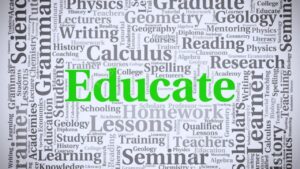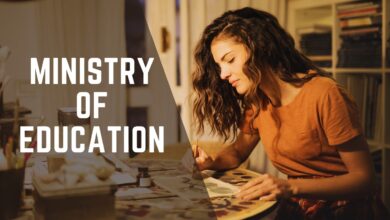Education Meaning

Education meaning that it will show the way to learning, is not a trip through a textbook but a voyage that gives people knowledge and skills. Therefore, education unfastens the doors of curiosity and develops the urge to learn more and comprehend the world around us in depth. The union of empowerment and illumination gives rise to minds and builds characters that can traverse the world’s perils in bounce and wonder. Start by discussing the importance of education and its meaning in our lives.
Three Methods of Analyzing the Concept of Education
There are three types of definitions for “educational meaning” (Scheffler 1960). One type of definition is “descriptive. It’s a phrase that aims to describe or clarify the concept known as “education meaning” through several words to describe what the issue is or how it can be defined. This kind of definition claims to define precisely how the term “education meaning” is commonly utilized. The other form of definition of “education” can be described as the programmatic one, which is used to promote or establish a notion regarding what education means or ought to be. A programmatic definition is not as focused on the nature of what education is or what the language of education is. It’s more interested in promoting the specific method of teaching that is thought to be desirable. Some prescriptive definitions are stated in short, clipped phrases like Pink Floyd’s “We do not require no education” or the name of Jonathan Kozol’s definition of the concept of education in terms of death at an early age (Kozol 1985). Programmatic definitions are often brief slogans or more profoundly felt sermons about what education ought to be. The third kind of description is stipulated, which is both practical and technical. It’s a verbal agreement that allows discussions to go on without a hitch without having to state each time, “This is what I refer to by the word “education.'” It is a type of linguistic shortcut, wherein the case of one person’s interpretation of “education meaning” is known as Version 1, while a subsequent person’s explanation is called Version 2, and a third interpretation is Version 2. The third version is referred to as Version 3. It’s a shortcut that allows discussions to proceed at a reasonable rate. In this chapter, my focus is on the descriptive approach, which is, in essence, the effort to come up with a concise and widely agreed-upon definition of what “education” is. The intention is to apply to the phrases typically used in regular communication and, additionally, to try to look for a valid and suitable definition that correctly reflects the everyday usage of the word. There’s a strategy that students and academics employ to recognize the meaning of the phrase, and that’s to track it back to its linguistic origins.
Few Modern Interpretations of Education Meaning

Sometimes this will be useful, but it is regularly perplexing because how the phrase becomes as soon as it is used will provide us with the facts we need to understand how it’s being applied these days. The word that we use these days, “education meaning,” may be linked to its Latin root, training, which means “to educate” as well as “to form.” In light of those linguistic roots, positive people pick to say that education or shaping is the way that training means it needs to be. In the same way, there is a difference. It is also true that the Latin word “educate” is a reference to “to guide” and indicates a different view regarding “education” in the sense of a method that aims at releasing people from the confines of ignorance. In general, I believe that looking back at the language’s former origins is more beneficial in understanding how concepts were interpreted earlier and helping us comprehend the educational meaning of terms today. Now, we will discuss different education concepts. There is a widespread opinion that it is a purposeful operation for transferring necessary knowledge, skills, and abilities to people who are immature and not ready to become adults under a social order. A term other than that could be the model of socialization. A second definition of the concept of education is the knowledge, understanding, and skills needed to be a productive and useful member of the existing society. This is known as acculturation. “acculturation” model too. A new concept in the world of education is also the development of critical thinking and reflective thinking that will help youngsters uncover, so to speak, who they are. The term “broad or individual education model” can be used to describe this kind of model. Because it enables me to view the world through a variety of lenses and, in particular, to think about and consider various meanings and practices of the dynamics of education, I have found the discussion of diverse educational meanings to be very fruitful. In addition, I have looked for a definition of “education meaning” that I believe is both descriptive and programmatically helpful for the educational practitioner because I think that education meaning is a practice and that in practice we need some very specific tools and toolkits to help us proceed. In the end, Lawrence Cremin, who is considered the most eminent historian of twentieth-century education, shaped the definition that I believe to be the most helpful:
According to Cremin (Public Education, p. 27), education means the purposeful, methodical, and ongoing effort to express, elicit, or obtain knowledge, values, attitudes, skills, or sensibilities, as well as any learning that emerges from the venture.
The site that encourages implies that the process of learning is a targeted action. The concept of education applies only to structures that are purposefully and mindfully created to instruct. By this definition, education is an activity and not a place. It is a purposeful practice that can occur outside of established educational contexts and several structures. Moreover, this activity also impacts values, attitudes, capabilities, sensibilities, and others besides knowledge-driven transmission. Education is a process that is carried out in diverse environments and is based on the notion of promoting knowledge, understanding, values, growth, caring, and behaviour. According to Deuteronomy 6:8, it may happen “when you sit in your house, and when you go on the way, and when you lie down, and when you rise.” Although contemporary societies have claimed schools as institutes for providing education meaning, the process of education is greater than the certificates issued after completion of pre-school, elementary, secondary, and university programs.
Goals, “Aims, & Objectives”

What is education for? is an inquiry that this concept brings up. After all, what is the purpose of education? In the field of education, aims, goals, and objectives can be used interchangeably. Philosophers of education have identified three distinct functions that are associated with “purpose.” Objectives (Aims), Goals, Objectives = AGO (Noddings 2007). Goals and values or fundamentals, that is, aims, are the general principles and values or fundamentals that an institutional or personal society believes to be the most important goal of learning. These are ideals that attribute certain principles or values as the ultimate aspiration. They also determine the ultimate objective or mission of an institution, besides what it sets out to achieve. It is the overall purpose of an educational establishment or a school that determines its general direction. “Goals” represent an additional stage of study that is distinct from the aims stage and is focused on content and subject matter that must be understood to help students understand and implement core values within aims. Goals help to translate goals into concrete content or steps that must constitute a part of the educational procedure. One of the objectives of 20th-century American schools was to instill the values of a shared set for the diverse population so that they could be integrated into a central American culture. The purpose was to equip students with the necessary skills in sciences, language, and mathematics. These were deemed important to allow the fulfilment of the larger common American beliefs. The term “objectives” refers to the stage that is most relevant to the curriculum and includes teaching resources such as books, videos, maps, and other visual aids used daily in classrooms, as well as weeks and months during the year. These are the most well-known “lesson plans” that use hour-by-hour mapping to show how teachers use their day to teach in their classroom. From the most immediate daily application of education to its most abstract goals, the AGO framework can be a helpful framework for analyzing education.
It appears to reflect a helpful dynamic from theory to practice if applied correctly. Unfortunately, in practice, objectives, daily schedules, and lesson plans come to dominate, and aspirations are frequently neglected. The deliberate paradigm of aims, goals, and objectives is frequently disregarded in favor of “getting through the day” in reality due to a variety of exigencies.
Three Concepts of the “Curriculum”

One of the most important terms for the study of the field of education is “curriculum,” and it typically describes the broad content of schooling. Since the field of curriculum studies evolved into an academic field that was studied in educational institutions, more expansive concepts of what it meant became apparent (Pinar and others, 1995). One of the most important advances when it comes to studying curriculum is the concept of covering both overt and non-curricula. “Overt Curriculum” is the term used to describe “overt curriculum” and describes the explicitly declared and clearly outlined goals, content, and topics, as well as books and materials, that constitute the official frameworks and requirements for a school as well as its instructors. It is the prescribed and approved curriculum that determines the operation of a school. “Covert” or “covert” curriculum is a reference to values, attitudes, and behaviours that define the daily routines at schools and extend beyond what is taught in the classroom. The curriculum that is hidden refers to the not-spoken “culture'” shaped by many elements and forces. What’s the design and layout of your school? What do the hallways appear to be like? What kind of examinations are offered? What’s the character of the interaction between students? The term “covert curriculum” refers to the many aspects of a school’s culture dependent on the lifestyles of the students, their habits, and the “lingo” of the students that influence the pace and flow of school activities. “Null” curriculum refers to the subject matter, books, topics, and even artifacts that are deliberately and purposefully not an element of the curriculum of schools. It could include little or no coverage of the past of indigenous communities in the curriculum of American historical studies. The list includes resources, books, and thoughts that have not been included in the program. Every education’s meaning needs to be a choice as well, and the subjects that have not been selected—and the reasons behind them—are as significant as those picked. There are also issues of race, political, gender, ethical, moral, and spiritual concerns that greatly determine the explicit, secret, and non-existent curriculums for all types of educational institutions. Three terms highlight the complex process of developing a curriculum. Although there’s a trendy expression that refers to a person “writing the curriculum,” in reality, the process of developing curriculum has evolved into an area of expertise that includes specialists in subject matter, classroom teachers, and education meaning leadership that requires a lot of thought about field tests, production, and revision. It’s one of the most fascinating and, at the same time, most challenging areas of modern educational practice. Some important terms that are crucial to the practice of education in schools and beyond are “schooling,” “aims,” “goals,” “curriculum,” and “pedagogy” in today’s educational jargon. The areas of education as well as Jewish learning in the 21st century are highly specialized fields that require careful consideration and research by future teachers. Teachers of the future require the same education and training as well as the same rigour we demand from physicians who treat our bodies as well as from those who design bridges over which we walk. In the 21st century, education is a crucial field that requires deep thought, training, and a passion for the subject.


